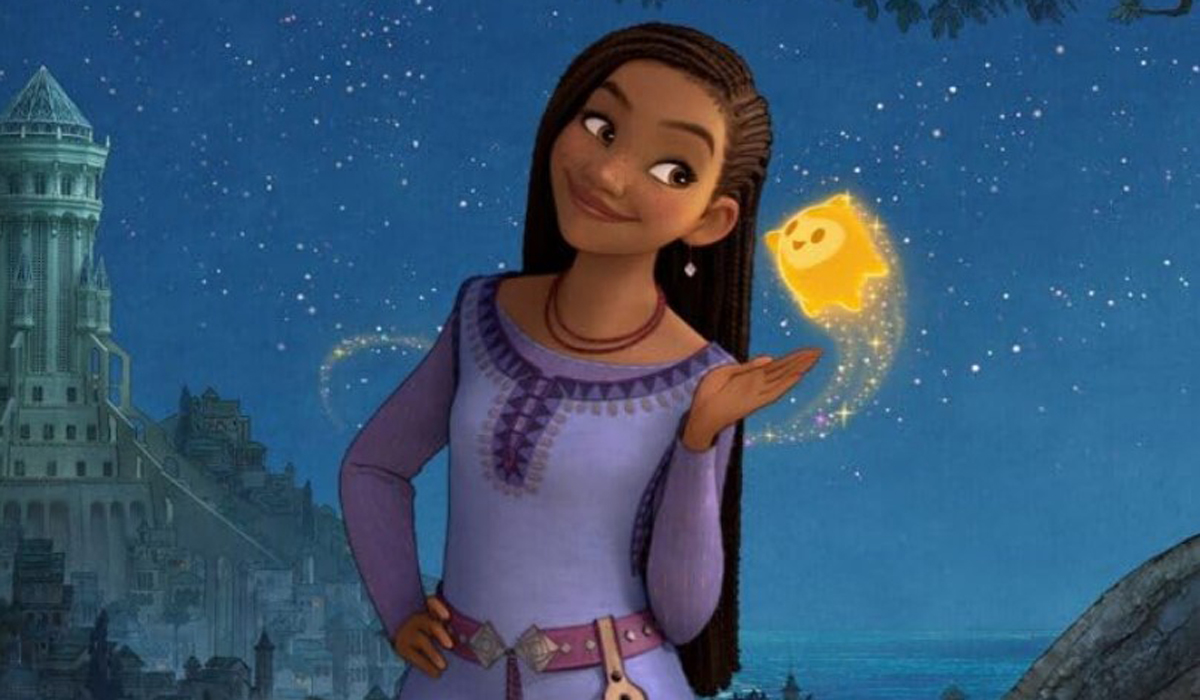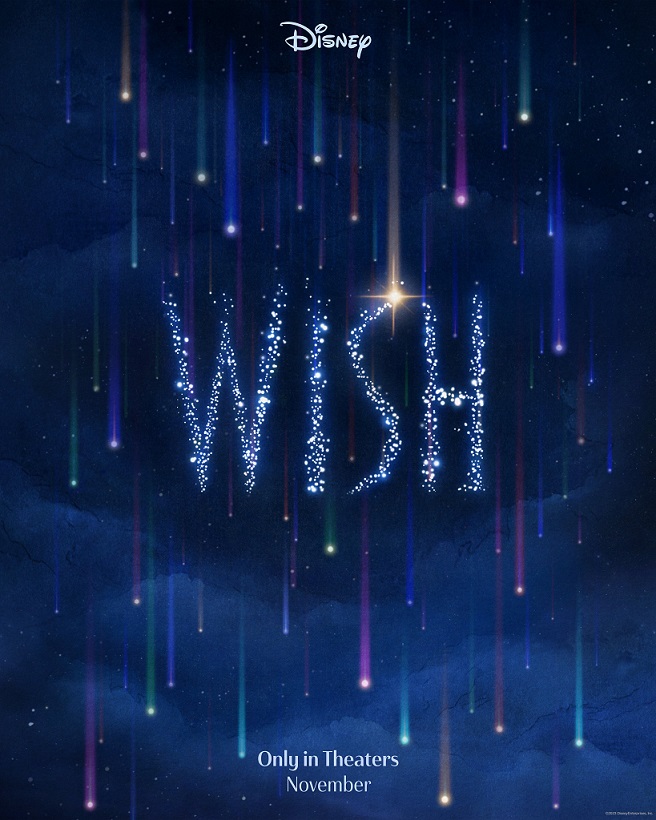 Walt Disney Animation Studios’ Wish is an all-new musical-comedy welcoming audiences to the magical kingdom of Rosas, where Asha, a sharp-witted idealist, makes a wish so powerful that it is answered by a cosmic force—a little ball of boundless energy called Star. Together, Asha and Star confront a most formidable foe —the ruler of Rosas, King Magnifico— to save her community and prove that when the will of one courageous human connects with the magic of the stars, wondrous things can happen.
Walt Disney Animation Studios’ Wish is an all-new musical-comedy welcoming audiences to the magical kingdom of Rosas, where Asha, a sharp-witted idealist, makes a wish so powerful that it is answered by a cosmic force—a little ball of boundless energy called Star. Together, Asha and Star confront a most formidable foe —the ruler of Rosas, King Magnifico— to save her community and prove that when the will of one courageous human connects with the magic of the stars, wondrous things can happen.
Among all the wonderful artists who contributed to the film, Dave Metzger is far from unknown to the readers of Animated Views. Let’s just recall that, over a long career as a composer, arranger, and orchestrator, his credits include composing the scores for Wish, of course, but also of Once Upon A Studio, Brother Bear 2 and Tarzan 2. He is also a highly regarded song arranger and orchestrator, having crafted the songs for many films, including the Academy Award winning Frozen, Tarzan, Frozen 2, Moana, Wish, and 2022’s Apple TV+ Christmas film Spirited.
Many of the songs, film soundtracks and Broadway cast albums that Dave has worked on have won Academy, Grammy, and Tony Awards – among them Let It Go from Frozen, How Far I’ll Go from Moana, You’ll Be In My Heart from Tarzan, the Tarzan and Frozen soundtracks, and the cast album from The Lion King.
In the world of theatre, Dave was nominated for the Tony Award for Best Orchestrations for the Tony-winning The Lion King. He also orchestrated the Broadway version of Frozen.
Along with having worked on eleven of the 62 Disney Animated films ever produced, Dave has also worked for studios as diverse as Apple Original Films, Marvel, Sony, DreamWorks, Paramount, and Warner Brothers.
As composer of Wish and arranger of the songs, Dave brings – as always – passion, experience, and craftsmanship to enhance the film. In order to do so, he uses his extensive knowledge and love of the many timbres of the orchestra, guitars, choir, percussion, and synthesizers, to create an amazing and inspiring score and bring unique colors to the songs.
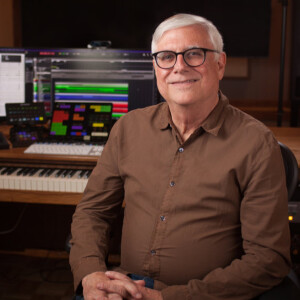
AnimatedViews: How do you see Wish within your journey as a musician?
Dave Metzger: It’s been incredible. From bass player at Disneyland to orchestrator for the Lion King musical, to arranger and orchestrator for eleven Disney classics and to composer for Wish, it’s been like climbing a mountain. I still don’t realize what’s been happening to me, but becoming the composer of Disney’s latest animated classic is kind of a wish come true, if I may say so.
I’ll always remember how it happened. I heard about this film from Matt Walker and Tom MacDougall, the music executives at Disney, and I thought there was no way I was gonna get this film, being known as an arranger and orchestrator. Then, when I was told by them that I was hired, I just screamed over the phone because I was so happy and excited and just shocked, and then I immediately started crying because it was this life-long dream. I couldn’t believe it for a certain time and then, when I sat in a room with the directors, Tom, Matt, producer Peter Del Vecho, Julian and Ben, I realized it was real and I was on a once-in-a-lifetime journey.
AV: You’ve worked with so many great songwriters. What made your collaboration with Julia Michaels and Benjamin Rice unique?
DM: They’re from a completely different generation, just like my own children. It’s a whole new approach, a whole new perspective. That was so interesting to me to collaborate with them. They brought such a fresh personality to the film. So, yes, working with them was very different from my past experience with Phil Collins on Tarzan and Brother Bear or the Lopezes on Frozen. And I must say, besides the musical aspect of it, Julia and Ben are such nice persons. It’s been both a wonderful collaboration and meeting.
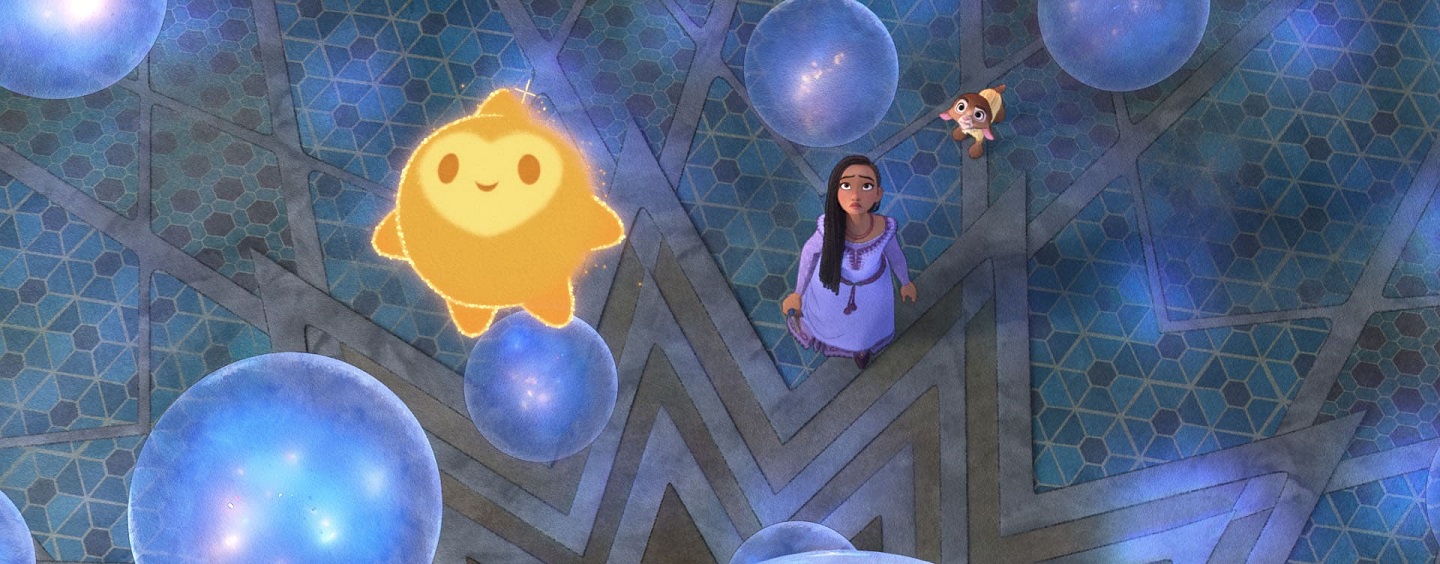
AV: Very generally speaking, the songs seem to be mostly strings-oriented, be they plucked, electric, acoustic or played with a bow, except for Knowing What I Know, which is very percussive. So, how did you approach the songs, orchestrally speaking?
DM: One of the fun parts of this project for me – working with Julia and Ben, Disney, the directors and the music department – was the development of the colors of the songs, and you’re absolutely right on your observations. Actually, at the beginning, it was kind of a journey where it was about spending a lot of time together talking about the musical language we were gonna be speaking on these songs.
For the first couple of songs we worked on, I did kind of a wider range in terms of instrumentation and colors, not string-focused, and then we had a kind of back and forth about where we really we wanted the songs to land on. As I said before, Julia and Ben have a whole different experience from the songwriters I’ve worked with before. But I would say there was one moment where we were just Julia, Ben and myself in Ben’s studio for a couple of days, and we were just hanging out and talking music. Ben was playing guitar and I was playing bass and Julia was just singing. Then, we really had a chance to get our minds together and focus on what direction we really wanted to go. What you hear in the movie is where we ended up deciding to go, and I was really happy with that. There’s one song in particular and it’s the end credit song, believe it or not, A Wish Worth Making. There are so many production elements in there that you can’t necessarily hear very clearly; but I have to say, I think the string writing I was able to do here is perhaps the favorite string writing of mine that I’ve done in my career. And it was one of those things where you only have about an hour to do the arrangement! It’s amazing how it happens sometimes where everything just sort of falls into place. You see the path and you just have to go. It was just the interaction, the tensions and releases that just sort of naturally fell. If you kind of listen closely, you can hear it.
Knowing What I Know Now is very much a percussive-driven song, as you said. Sort of buried in the mix was a chance to do something unique. I’m not usually a novelty orchestrator, but I thought it was a chance to do something different here. So, I used twelve basses where I had six on the normal side of the orchestra, but then I had another set where the violins normally are. Then I had sixteen celli, eight where they normally are and eight where the violins normally are. And I used twelve French horns, contrabass trombones, bass trombones and a contrabass saxophone. What I was interested in was having that really low, grounded orchestral band with all those percussion playing on top of (it). So, that was a particularly unique song for me, but it was a lot of fun to do something that different. It’s subtle, it’s not like in your face, really loud, but if you took it away, you’d really miss those low elements.
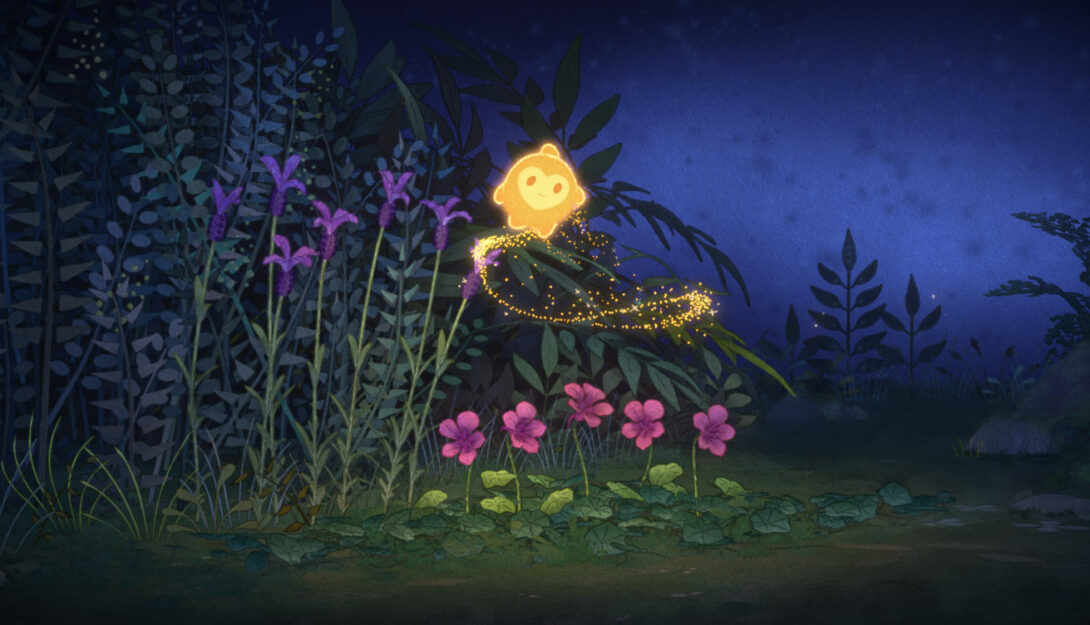
AV: Scoring a movie with so many songs poses theme questions. How did you find your own balance between song themes, score themes and mickey-mousing?
DM: It’s a wonderful question because it addresses all of the three elements I was juggling the entire time. Let’s take it backwards. About the Mickey-Mousing, it was a discussion we had with the directors, Chris and Fawn, from the very beginning when I started scoring, regarding the overall feel of the film. One of the things that kept coming up was having a nod to classic Disney animation because it’s an anniversary film of the Studio. So, there was very much the desire to have an acknowledgment of that. I worked on so many Disney projects throughout my career that it’s part of my DNA to some degree. But also, I had access to scores of classic films. When I first was hired, I did go through and sort of studied the classic scores from Snow White, Cinderella or Jungle Book. I have a whole bunch of different scores and I really wanted this one to be a mixture of colors inspired by these films using what’s appropriate in the history of film at the proper moments. So that was one element.
Then for the song themes, I picked the moments where I really wanted to utilize some of them. In fact, the very first thematic notes in my score are indeed from the song “This Wish”. You can hear them with the Steamboat Willie logo. I used a ghostly imaging of the first five notes of the chorus of the song. Also, one of the instruments mixed in there was a dulcitone, which is the instrument I ended up using for the globes, the wishes themselves. That was the instrument I continually used as my thematic instrument, and I thought that would be a good way to introduce the theme from the song right at the very beginning of the film.
AV: That reminds me that, the same way, for everything magical in Pinocchio, they used the Novachord.
DM: Exactly. It’s part of scoring. It’s trying to figure out your colors. It’s not just about themes. It’s also about what instrumental color you’re going to be using to tie in with characters.
Then, going back to another example of the using of the song themes, there’s A Wish Worth Making, the song from the end credits. I didn’t want to have that song come out of the blue and have no correlation in the film. So, I looked for a couple of moments in the score and in the film to introduce that theme, and I sort of thought to tie it to Sabino, Asha’s grandfather. I wanted it to be his theme, even if it’s not my theme. For instance, when Asha is talking with Magnifico asking for her grandfather’s wish – which was soon dismissed, obviously – I felt it was a really nice moment to use that theme. And at the end of the film, when her mother gets her wish, I reintroduce it. There are other examples throughout the film.
And as far as my own themes for the score, there’s The Kingdom Of Rosas, which is the theme at the very beginning of the film, with the storybook entrance. That theme came to me when I was sitting at LAX, at the airport, waiting to board a plane to fly home after a meeting, and it just popped into my head. So, I wrote it down very quickly on my phone, so I wouldn’t forget it. And if you listen closely, Magnifico has a theme that is introduced when he comes out to the crowd, and his theme and the Rosas theme are closely related.
There are other sort of subtle thematic elements that are not really from the themes of the songs, but I used them to guide me in some of my themes. As Magnifico gets darker, I utilize the melody in the chorus, a descending scale from This Is The Thanks I Get?! I wanted to use that element when the character goes crazier and crazier. I’ve worked on so many thematic ideas and treatments during my career that this film was a chance for me to finally to do it all the way.
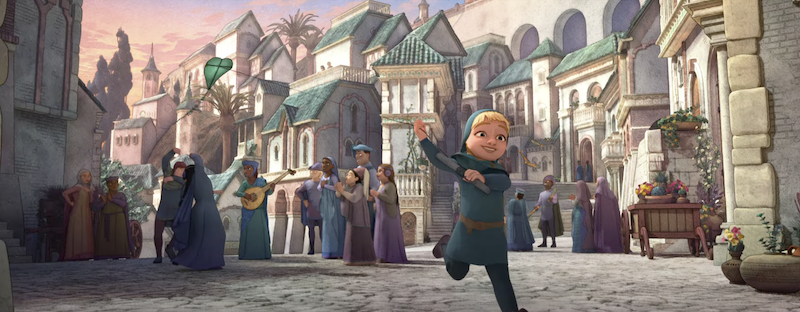
AV: I love the way you set place and time at once, when we open the book, through your music. That piece could even stand alone as a concert piece, just like Rodrigo’s Concierto de Aranjuez, that shares the same kind of inspiration – Spain and Renaissance – through solo guitar and oboe.
DM: That was not intentional, but that piece is definitely part of that musical realm, even though I would say it’s not Spain itself, but an island in the middle of the Mediterranean Sea. Hence some more African influences in the orchestration. That said, that moment was a unique chance to write an entire theme. As you mention it, it’s a piece that stands alone. I really enjoyed that opportunity since the scene is long enough to welcome a full piece of music.

AV: From the cue Everything The Light Touches on, we discover a whole new aspect of your music, much darker and more powerful. The “Dark Side” of Dave Metzger!
DM: (laugh) It’s funny because it’s so not me! But at the same time, that’s such a fun part of scoring a movie! Even though I’ve not really had the chance to show that side of my music before very much, there are times I used it. Obviously in Moana, in some of those battle scenes, that’s a lot of my contribution. But I’ve never been able to go as massively dark as in Wish, because I’ve never had a character as purely evil as Magnifico. It really opened up that door. What I did there also goes back to the Lion King musical for which I was able to go to darker places with Scar. I don’t know if I’ll ever have another chance to do that again in my life, so that was my chance to do everything I really wanted to do! Also, I think part of it is getting a little more mature as a musician, a composer and an orchestrator, and you pick up more and more tools along the way. I know how to make something pretty darn evil and dark! That was the perfect opportunity. And I have to say, that was one of the most fun parts of scoring that movie, writing for Magnifico. When I saw him in his workshop conjuring with his staff, I thought that was the chance to pull out all the stops!
AV: The involvement of the musicians is also incredible.
DM: Absolutely. I think part of the reason is having all the musicians playing together at the same time. Sometimes, even if you have all the musicians in the same room, you record them separately, like the strings or the brass only. But I did that as minimally as possible because there’s nothing like when they’re all playing together. When they do so, the air in the studio moves differently… The physics are different. They know exactly what their role is. In the other way, they don’t know what the brass will be doing, so they don’t know how to play their part. They’re all sight-reading. In some of these cues like Magnifico’s Rise, the big confrontation, there are some serious notes they have to play. I usually sit in the control booth, but here I wanted to be out there in the studio with the musicians. I tell you: how amazing that was to hear them play it the first time through, and how well they played it. It was just stunning. I’ll keep that with me for the rest of my life.

AV: And now we come to my last, but maybe most essential question: how do you work with chickens?
DM: (laugh) You know, it’s really too hard to train them to sing like that. It took a lot of time! It’s so funny you bring that out. I’ve been thinking, after all the work I did on this film, it would be ironic if the thing that ends up being best known of my work would be that chicken song!
Seriously, the first time I saw a screening of the film, it was very rough, just storyboards and there were holes in the story. But that chicken scene was already in there. They already knew they wanted to do something like that. So, that actually was the first piece of music I wrote for the whole film! Because they wanted to be able to start not only animating to it, but also to get it for test screenings. So, we just talked about what style of music would be the funniest for that scene, and we ended up with a polka.
Actually, I was fortunate there were very few changes or notes from the directors on the score of Wish… the exception being The Happy Chicken Song! (laugh) I had more notes on that song than for the whole rest of the score! What was difficult was to figure out what would be singable by chickens. You can’t have too many super long notes. There are a few, obviously, but it was fun writing counter melodies, figuring what chickens could do and having Valentino conducting them!
The chickens are actually a group of music editors in the animation building at Disney. Earl Ghaffari was kind of the leader of that bunch. He’s been the head music editor at Disney for such a long time and is a very dear friend. He has this ability to sing like a chicken, and the first time I heard him do it, I wondered why he didn’t do it as a professional. There are no professional chickens, after all! So, he brought his colleagues and they were all just amazing!…
Wish soundtrack Deluxe Edition (with Dave’s score) is available to order from Amazon.com!

The Art Of Wish is available to order from Amazon.com!
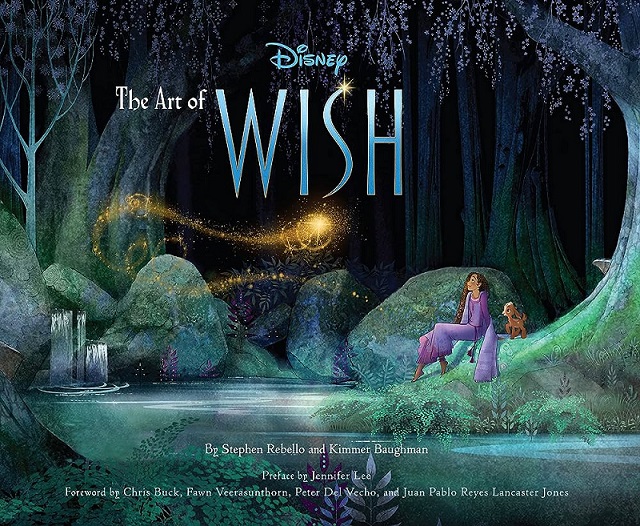
With our thanks to Dave, the team at White Bear PR, and April Whitney at Chronicle.



